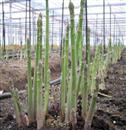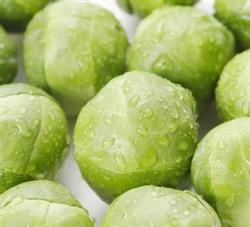How to deal with disastrous weather by planting asparagus

Asparagus is a perennial herbaceous plant. It is a crop with strong adaptability. It can be planted at latitudes of 20°~60°. But only under suitable environmental conditions can asparagus achieve high yield and good quality. In order to better guide asparagus production, the technical measures to deal with disastrous weather are introduced as follows: 1. Waterlogging disaster (1) The impact of disasters Excessive rainfall in summer and autumn causes water in the bamboo shoot field, which will cause harm to asparagus, cause poor soil ventilation, seriously affect the respiration of roots, and cause root rot. At the same time, because the absorption function of roots is reduced, and the temperature of the aboveground part is too high, the evaporation amount is large, which will cause physiological water shortage in the aboveground stems of asparagus, lead to the wilting and yellowing of the aboveground stems, the deterioration of physiological functions, and the occurrence of stem blight, resulting in death of asparagus or serious yield reduction in the coming year. (II) Preventive measures 1. Select sandy loam with high terrain, drought irrigation and flood drainage to plant asparagus. Such plots have good air permeability and no ponding. 2. Perfect asparagus field water conservancy facilities, build field drainage ditch, in case of rain can timely discharge open water outside the field, so that drainage is smooth, do not make bamboo shoot field appear ponding phenomenon. (III) Remedial measures after disasters 1. In case of continuous rain and rain, hoe and loosen soil in time to increase soil permeability 2. Strictly control diseases and apply fungicides in time to reduce the occurrence of stem blight and root rot. The specific method is: spray the fungicide once every 7 days, spray it again in time after rain, and spray the stem on the ground thoroughly. Available 50% Shuangjisheng 400 times solution +80% Bideli 500 times solution or 50% Shuangjisheng +70% mancozeb 300 times solution spray. 3. Use more potassium fertilizer to enhance the disease resistance of asparagus. 2. The effect of drought (1) Because asparagus absorption roots are underdeveloped and its water absorption capacity is weak, drought is easy to cause asparagus yield reduction, especially in harvest period, tender stems become thinner and difficult to pull out, resulting in increased hollow shoots and abnormal shoots, high scattered head rate, easy aging, seriously affecting yield and quality. (2) Preventive measures When the soil moisture content is lower than 16%, water it in time. There is less rain in spring in our province. In order to prevent spring drought, we can irrigate enough water when asparagus stems have died and the growth and development of shoots have basically stopped after winter, so as to solve the problem of spring drought. (3) Remedial measures after disasters In case of drought during the growth period of stems and leaves, especially during the peak period of assimilation product accumulation, photosynthesis cannot proceed, watering should be carried out in time. Three, the impact of wind disaster (a) the asparagus stem on the ground is higher, up to 1.5 meters above, easy to lodge in strong wind weather, affecting growth (b) preventive measures 1. each row hit a 1.5-meter-high stake at both ends, pull two fiber ropes, rope height 70~80 cm, stop the mother stem between the two ropes, prevent the mother stem lodging. 2. Select healthy female stems. When the bulb disk expands, many new growth points will appear. Strong stems with a diameter of more than 1 cm and a height of 1.4~1.6 meters should be selected. (3) Remedial measures after disaster: clearing lodging plants and cultivating ridges. 4. Hail disaster (1) The impact of disaster Asparagus is easy to cause a large number of wounds after hail disaster, and its resistance ability is reduced, which is easy to be invaded by germs. (2) Preventive measures should strengthen the awareness of hail prevention and take active preventive measures. (3) Remedial measures after disasters should be timely spraying to prevent the occurrence of diseases, available mancozeb 600 times solution or carbendazim 500 times solution, spray once every 7 days, spray 3 times continuously.
- Prev

Ten benefits of eating kale regularly
You must be no stranger to cabbage vegetables. But if you ask what the health care effect of kale is, you may not be very clear. Next, the editor of Aimei net will go with you to understand the nutrition and health value of cabbage. Cabbage is a kind of healthy vegetable kale is a big family, it has.
- Next

Three steps of asparagus management in early spring
Due to the low price of asparagus in the past two years, most asparagus farmers have given up field management or intercropped with other crops in the asparagus field, seriously affecting the growth, development and yield of asparagus. In addition, asparagus was frozen to death prematurely in 2009, resulting in less accumulation of nutrients and a decrease in the number of scale buds differentiation and formation.
Related
- Where is it suitable to grow horseradish in China? it is expected to see the middle altitude horseradish in Alishan.
- How to prevent tomato virus disease reasonably? (Control methods included)
- Many people like to plant towel gourd on the balcony. What are the main points of this method and management?
- What crops can chili peppers be mixed with?
- Fertilization techniques and matters needing attention in Tomato
- What are the grafting techniques for peach seedlings in spring?
- Harm and control methods of root swelling disease of Chinese cabbage
- What are the pests of sweet potatoes? How to prevent and cure it?
- Symptoms, causes and Control methods of navel Rot in Tomato
- The cause of "Cucumber rotten bibcock" in Farmers' planting Cucumber and its Control Plan

